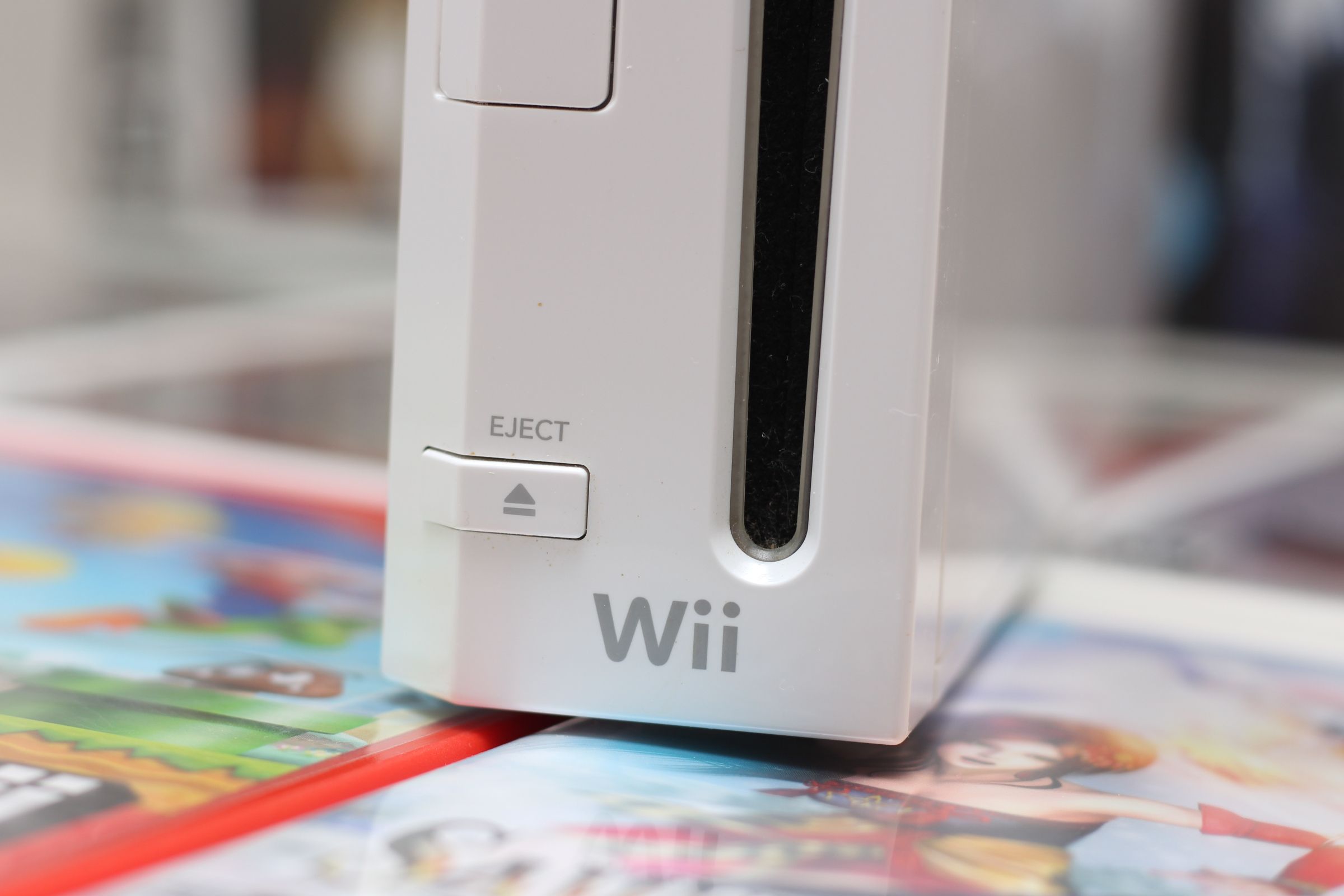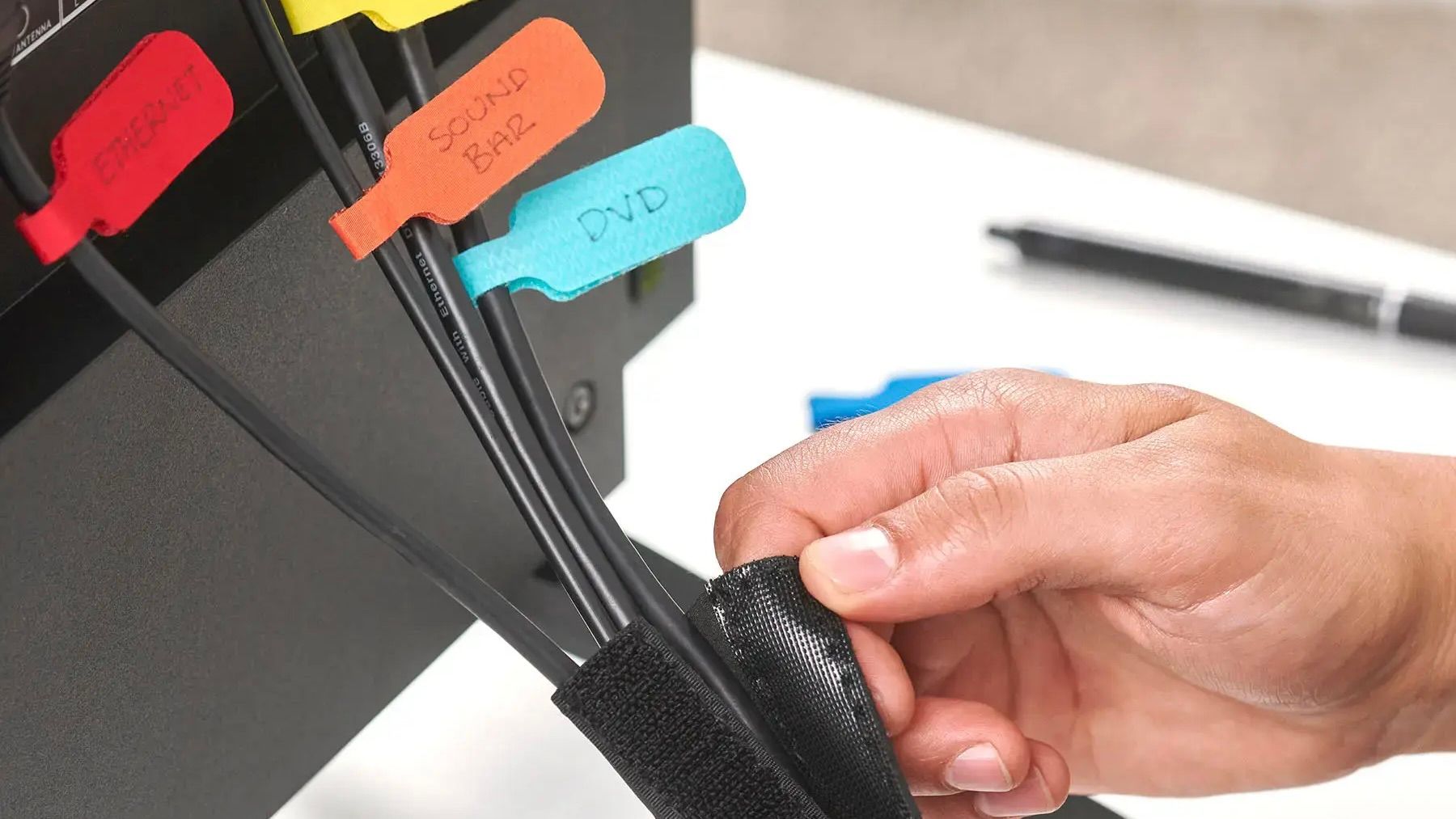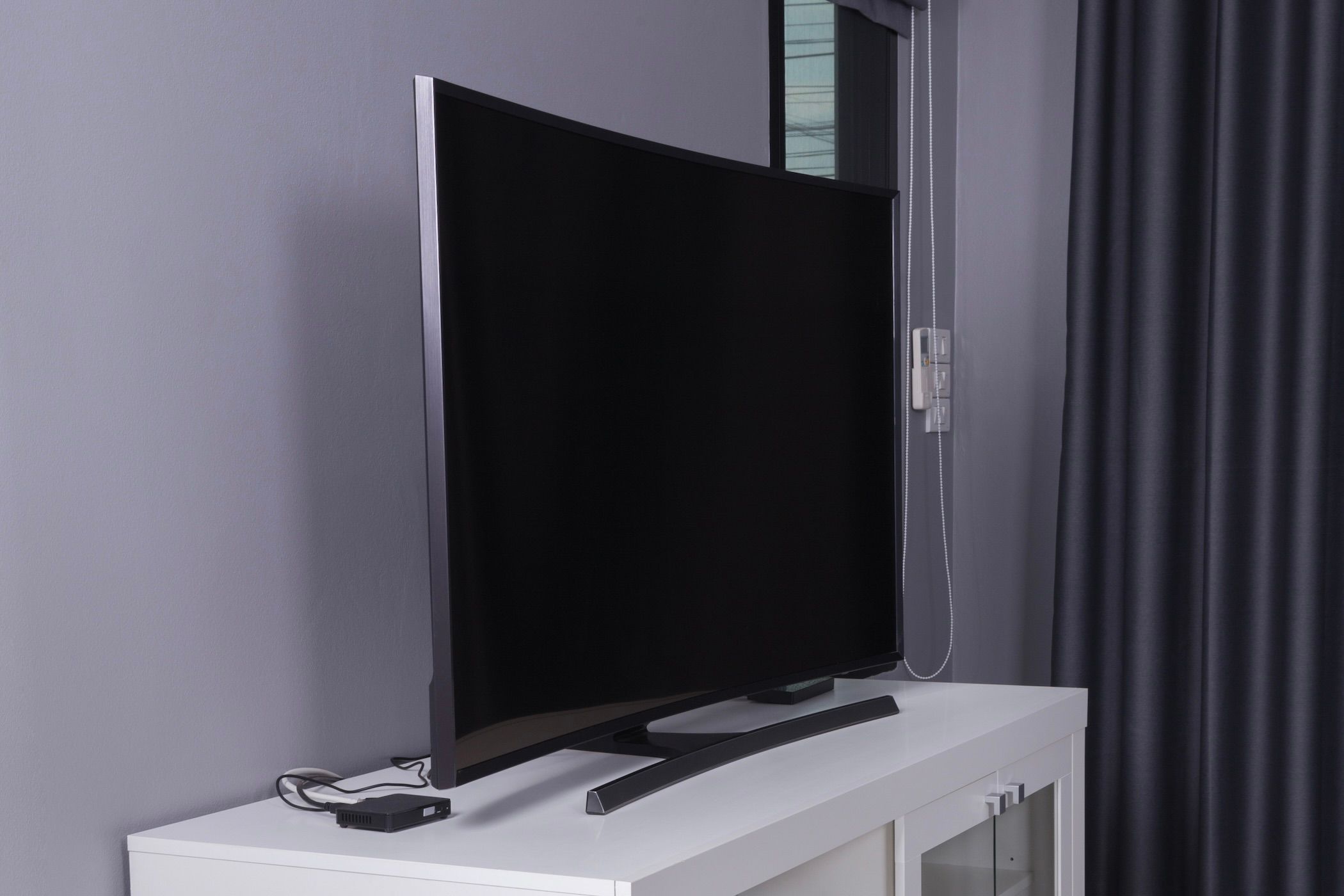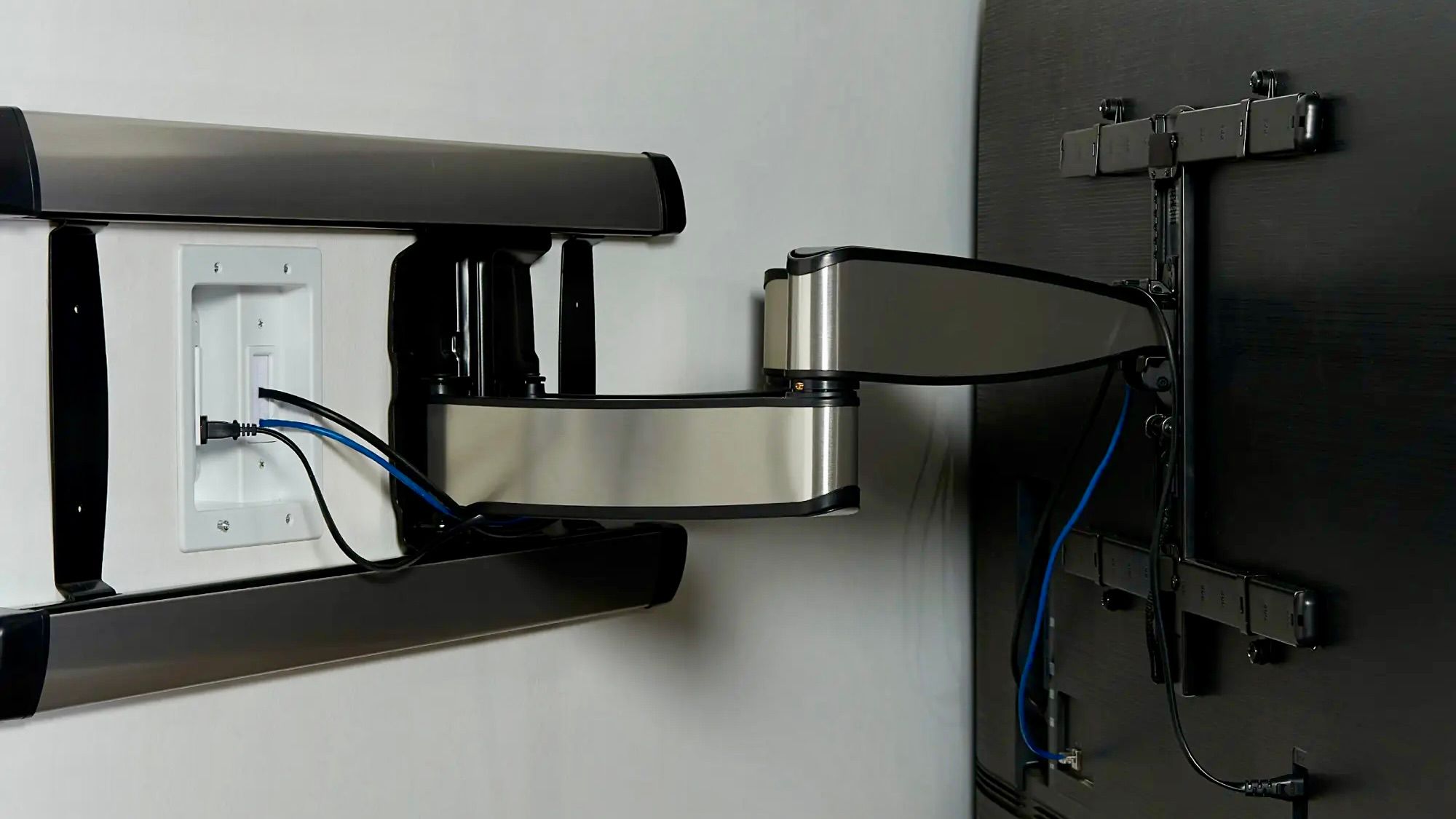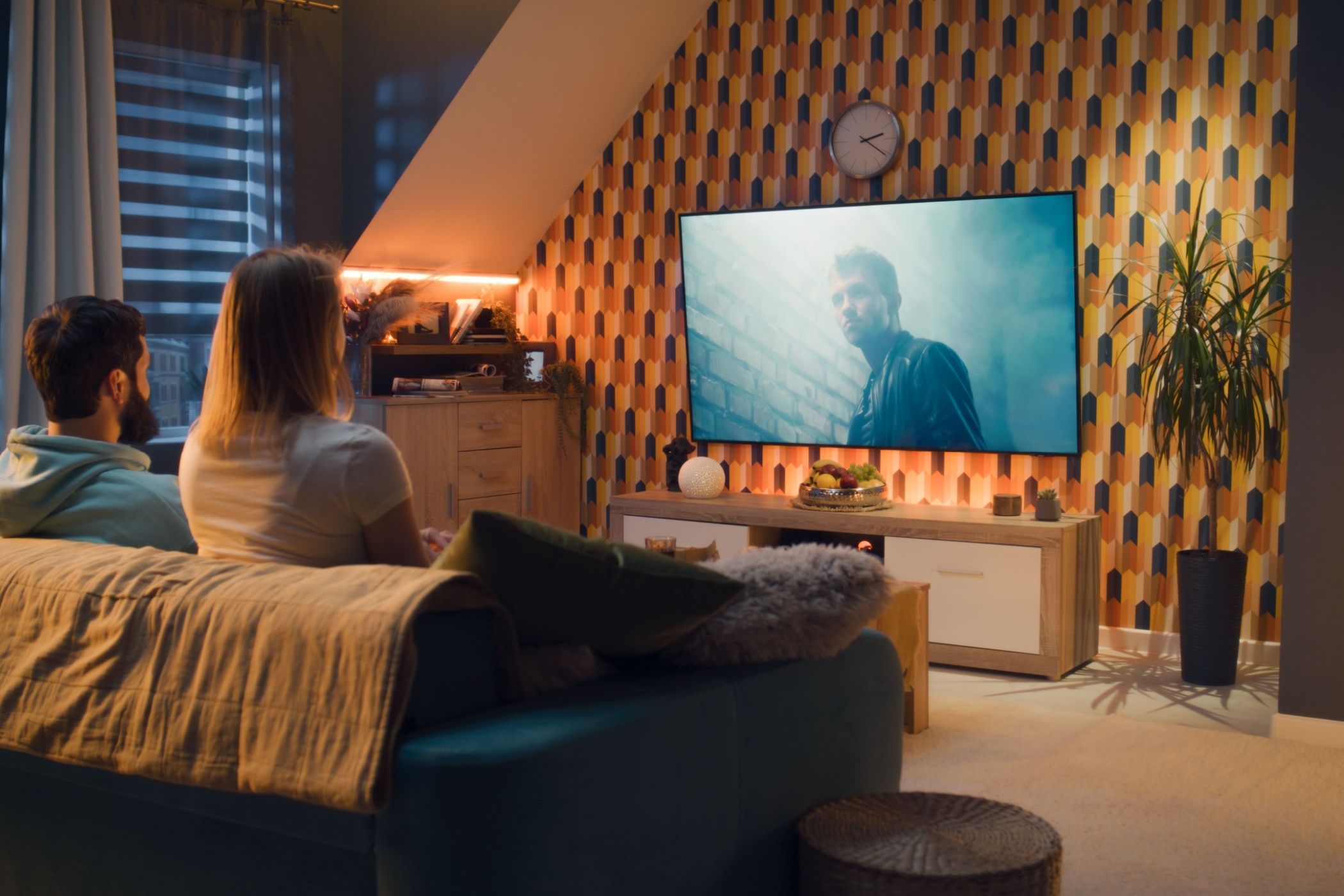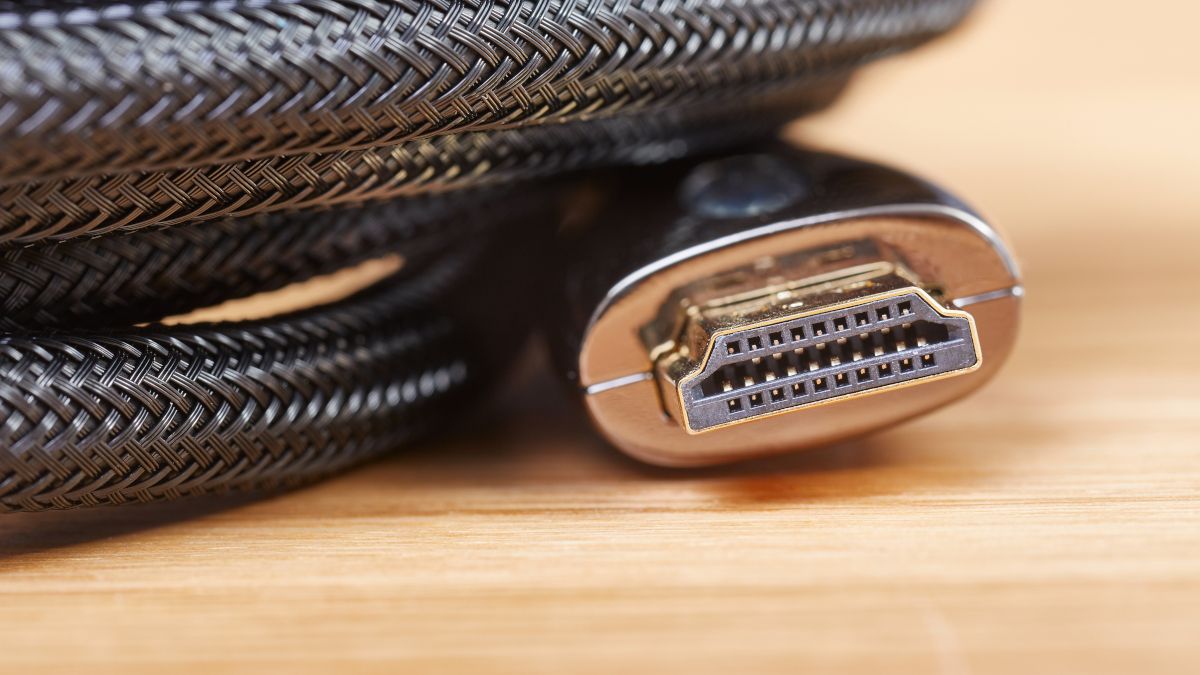Wires are a fact of life in any home theater setup, and making them disappear is the ultimate flex for home theater geeks. So in service of going “wireless”, here are some tips and tricks I’ve picked up over the years.
Sell or Donate the Gear You Don’t Use
First, I’m willing to bet that at least half of you reading this guide have one or several AV components on a TV stand that hasn’t been touched in years. If you can’t recall the last time you picked up your Nintendo Wii Nunchuks, maybe it’s time you parted ways with the console.
Once you start removing unnecessary or outdated elements of your home theater setup, you’ll also be removing the many wires that go with these components. Yes, it’s a bit of a no-brainer, but you need to bid farewell to Mr. VCR and Mrs. LaserDisc.
Your New Best Friends Are Zip Ties, Velcro, and Labels
Here’s a fact: when you shove a bunch of cables together in a confined space, over time, they’re going to get all tangled up. This may not be such a big deal if you own a piece of closed-back furniture that hides most of these wires, but “out of sight, out of mind” doesn’t always translate to safe. Putting unnecessary strain and pressure on cables can lead to loose and damaged connections, and the last thing anyone wants to do is start a very preventable fire.
A cheap investment you can make that will probably solve two-thirds or more of your cable clutter issues is a pack of zip ties or Velcro straps. These accessories are available in numerous gauges, lengths, and colors, which bodes well for those of us who want cosmetics to look good with home decor. Securing cables with wire ties can also lead to improved heat dissipation for the AV components they’re connected to.
One of the other annoying parts of living with a rat’s nest of wires is not knowing what any of the cables actually connect to. Even if you don’t have a single issue with any of your AV devices for years on end, there will likely come a day when you want to upgrade a frequently-used component, such as a game console or streaming device. So, you pull back your entertainment center, disconnect the HDMI from your component, but disconnect the wrong HDMI from your receiver, and now your TV won’t display video.
If you bought all those HDMI cables at the same time, there’s a good chance they all look alike. This also makes them harder to trace from one end to the other. To avoid this frustration now and always, I recommend investing in a pack or two of wire labels. Simply secure a label to each connection running into (and out of) your TV, projector, soundbar, or AV receiver, and avoid guessing which cable goes to what component altogether!
Put Your Home Theater Furniture To Work
TV stands and entertainment centers come in all shapes and sizes, which means that Product A could feature far better wire and component management than Product B. Heck, Product B may not even have built-in wire and component organization. I’m referring to things like shelving, cable passthroughs, clamps and holders, integrated power strips, and so on.
Luckily, a lot of TVs include wire management features, too. Many manufacturers use the rear-facing part(s) of your TV’s stand or feet as drop-in or slide-in holsters for wires.
You’ll want as much natural airflow in and out of your home theater furniture as possible because, like humans, AV components need to expel heat to operate safely and efficiently. Keep your eyes peeled for furniture with solid all-around venting or a lot of venting in one particular section.
Should you own a massive collection of AV components (which all need to be connected with cables), investing in an AV rack may be a better option for organization and airflow.

Related
Out of Sight Might Mean “In the Wall”
Mounting a TV isn’t an overly complicated process, and it’s hard to deny just how cool the fruits of your labor will look. But one thing that can quickly dismantle the experience is a bunch of black cords dangling down from the TV. While it may be tempting to punch two holes through a stud bay to route these wires through the wall, only specific cables are in-wall rated.
Now, you shouldn’t have an issue finding HDMI and speaker wire with the correct in-wall jacketing, but power cables are a different story. And heed these words: it’s usually against electrical code to run traditional power cables through the wall. Why, you may be asking? Because one little snag on a nail or screw is all, it takes to rip the cable jacketing and spark a fire.
So, what do you do with all those power cables staring you in the face? One option is to install an in-wall power kit, which is a relatively straightforward DIY job that shouldn’t take much time. Using a drywall saw (many kits come with one) or utility blade, you’ll use the kit’s provided templates and hardware to cut holes and install the provided outlet-gang box combo.
Run any other in-wall-rated cables you want to hide in the wall you’re installing the in-wall kit. You’ll be able to use the provided cabling and any wire snakes the kit may come with to route these connections more easily.
If an in-wall power kit isn’t an option (apartment building walls are sometimes off-limits), you can just as easily invest in a cord cover kit. This plastic channeling comes in different shapes and sizes and usually attaches to the wall via adhesive or screws. Once in place, you’ll run your wires through the channel and snap it shut, giving you a much cleaner look. In most cases, you’ll even be able to paint the cord covers to match home decor.
Go Wireless as a Last Resort
Admittedly, I’m not a big fan of wireless transmitters and receivers, but I’m not going to deny the fact that this technology has drastically improved over the last decade. And if push comes to shove with unmanageable cable clutter, and you’ve decided to relocate most of your AV components to a closet, a different room, or in a basement or attic, going wireless might be the only option.
Wireless HDMI transmitter-receiver combos prevent you from having to run long HDMI cables from one part of your home or business to another. If you’re unaware, HDMI has been known to get a bit wonky when you’re dealing with anything longer than 50 feet, which most typically presents as a “no signal” message on your TV. Many HDMI transmitters are rated for up to 200 feet (or more) of wireless coverage.
While HDMI transmitters can be on the pricey side, purchasing and installing a 50-foot-plus HDMI cable can be quite a headache, especially if you’re working with walls, floors, and ceilings in an older home.
If you’re shopping for a transmitter-receiver combo, you may also want to pick up an internet-connected universal remote or an RF-style controller, too. Made by companies like SofaBaton, these remotes let you program and control multiple AV components with a physical remote, app, or both. It’s the perfect accessory for keeping controls as organized and intuitive as your clutter-free cabling!
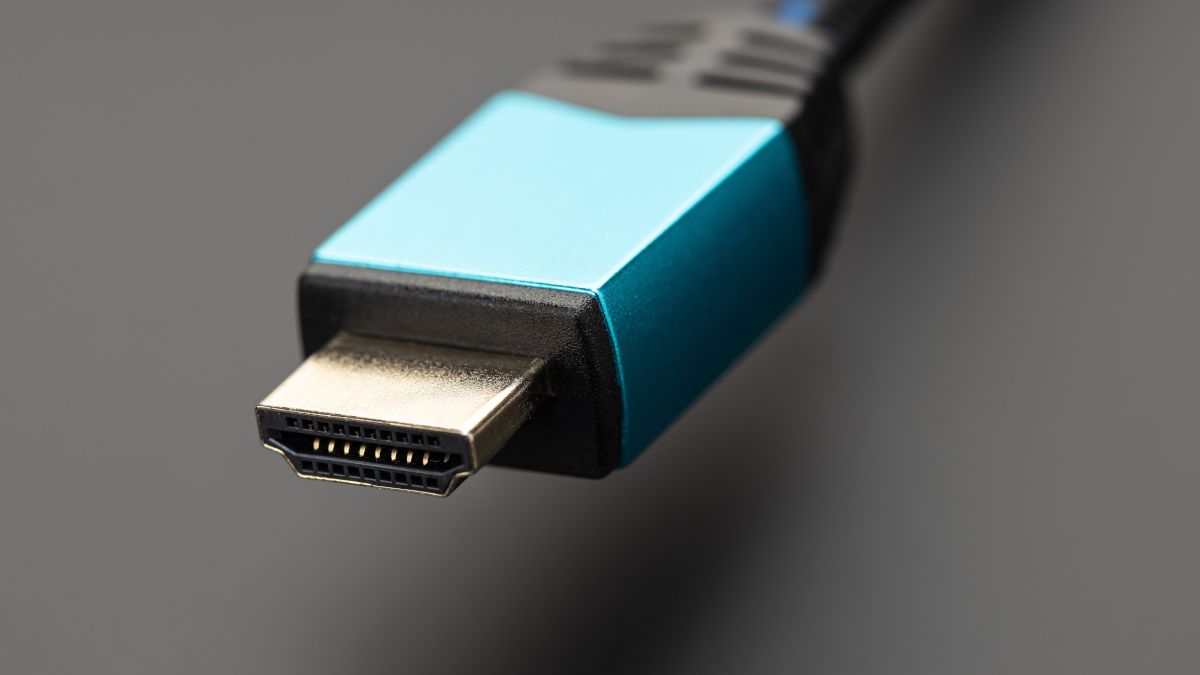
Related
Start Eradicating Cable Clutter Today
Whether you follow one or all of the five steps I’ve outlined in this post, spending just 20 to 30 minutes on cable management can go a long way toward improving the safety and performance of your home theater equipment while also reducing the anxiety that comes with staring at unsightly wires on a daily basis.


